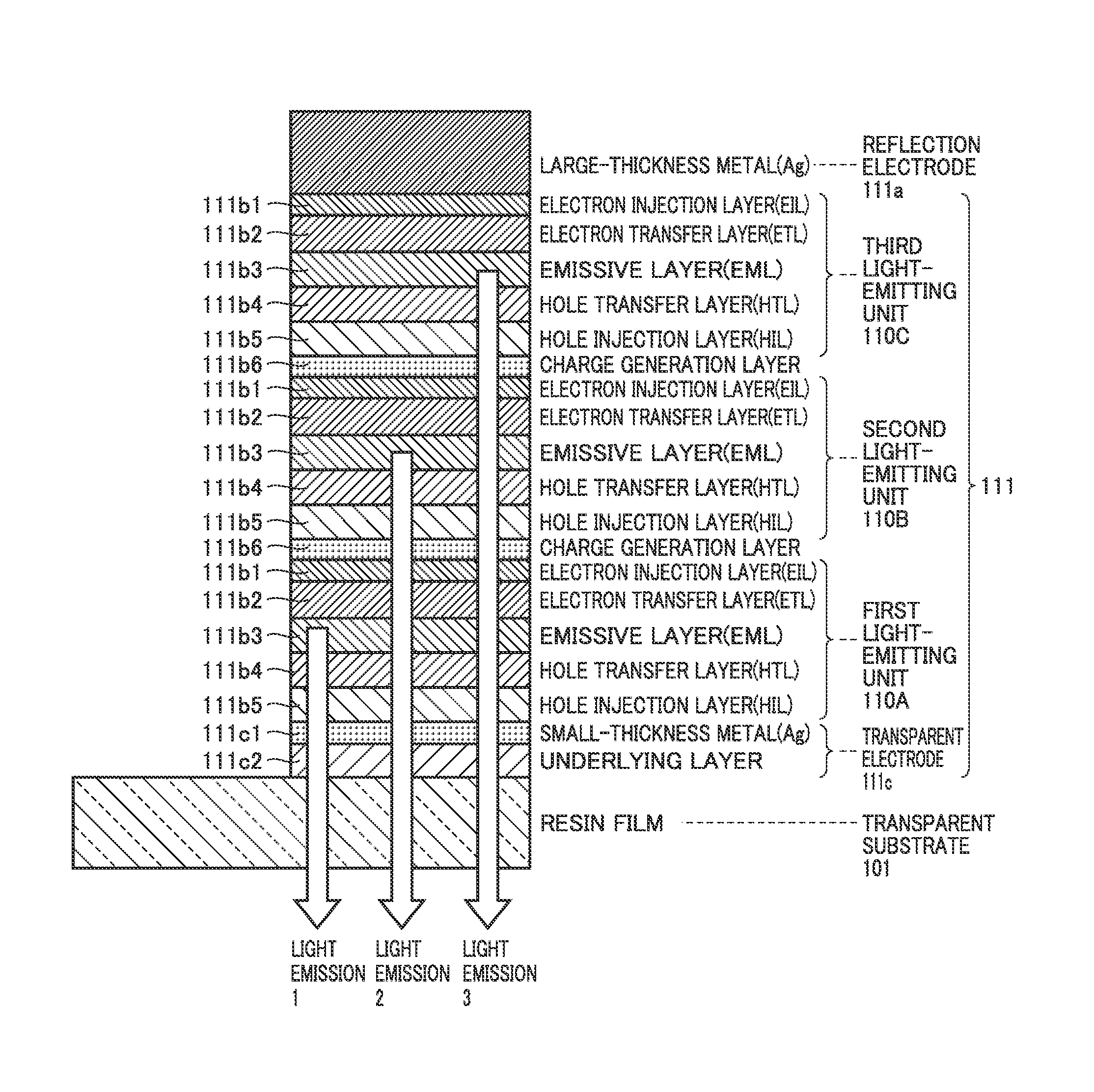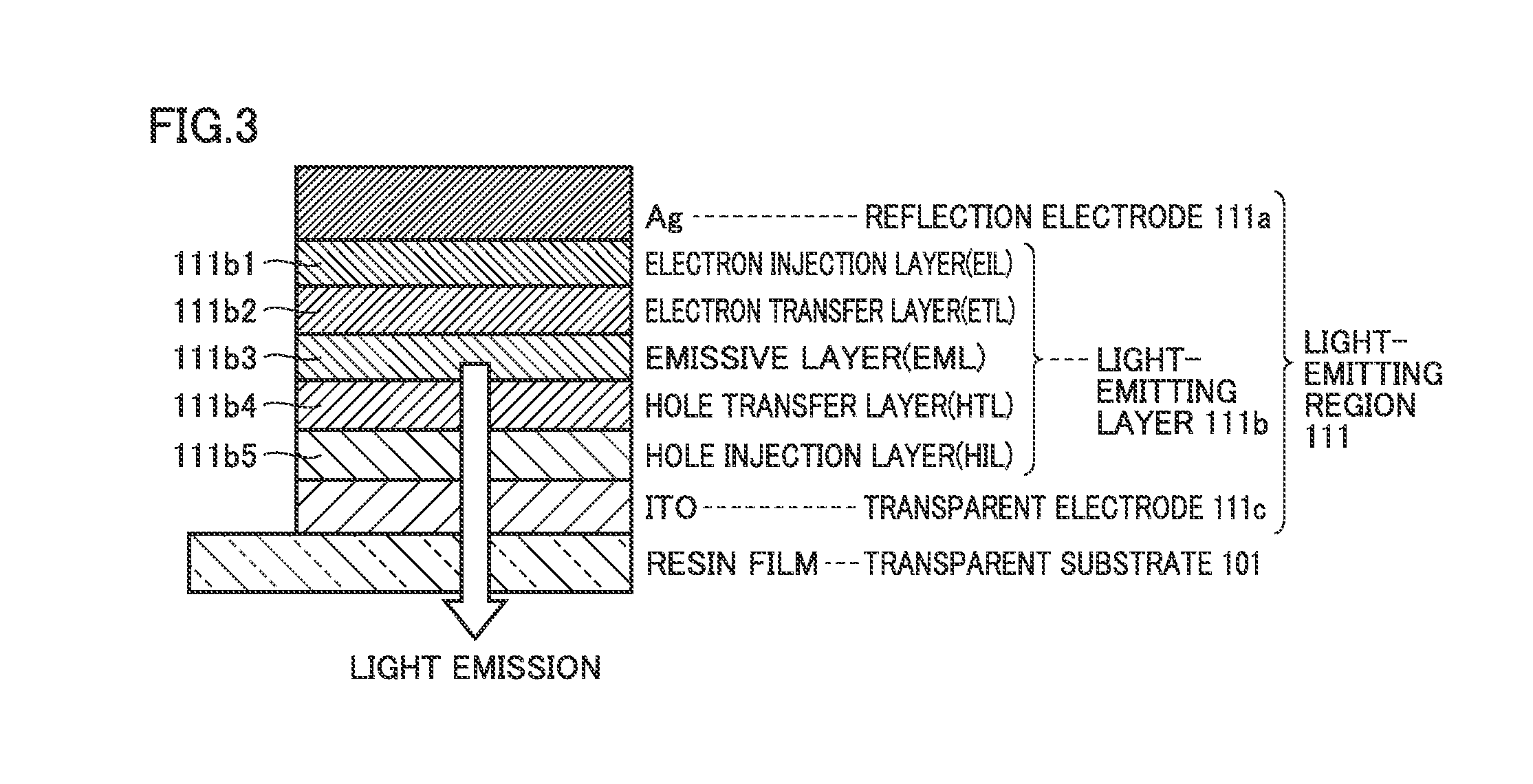Electroluminescent Device
a technology electrode, which is applied in the direction of electroluminescent light source, electroluminescent light source, organic semiconductor device, etc., to achieve the effect of improving the efficiency of light extraction
- Summary
- Abstract
- Description
- Claims
- Application Information
AI Technical Summary
Benefits of technology
Problems solved by technology
Method used
Image
Examples
first embodiment
[0052]A general construction of an electroluminescent device 1 in the present embodiment will be described with reference to FIG. 1. FIG. 1 is a cross-sectional view schematically showing electroluminescent device 1 in the present embodiment. Electroluminescent device 1 has such a structure that a transparent electrode 111c, a first light-emitting unit 110A, a second light-emitting unit 110B, a third light-emitting unit 110C, and a reflection electrode 111a are successively stacked on a transparent substrate 101. The light-emitting units are configured to be identical in emission wavelength.
[0053]The electroluminescent device is configured such that a first relative maximal angle or a highest intensity angle when viewed in a front direction of angular dependency of emission intensity in light emission from a light-emitting unit alone is different, and an expression (1) below is satisfied, where D(θ) represents angular dependency (light distribution characteristics) of emission inten...
second embodiment
2.1 Example in which First Relative Maximum of Angular Dependency of Emission Intensity is not Maximal Intensity
[0187]Though the example in which the first relative maximum of angular dependency of emission intensity is defined as the maximal intensity has been described in the embodiment, the present embodiment is not limited thereto. An example in which a relative maximum other than the first relative maximum of angular dependency of emission intensity is defined as the maximal intensity in a case of three light-emitting units will be described below with reference to FIG. 5. A case that the relative maximum other than the first relative maximum of angular dependency of emission intensity is defined as the maximal intensity is desirably designed in the present embodiment such that an angle at which maximal intensity is attained is defined as a peak angle of angular dependency of emission intensity of that light-emitting unit.
[0188]FIG. 25 shows a design example in the model in FIG...
third embodiment
[0196]Though an embodiment of an electroluminescent device of a bottom-emission type has been described so far, the present embodiment is applicable to an electroluminescent device of a top-emission type as shown in FIG. 35. In this case, the side of visual recognition corresponds to a side of sealing member 120 opposite to reflection electrode 111a. In FIG. 35, a concept of a design of each embodiment described so far can be used, by successively providing numbers as light-emitting unit 1, light-emitting unit 2, light-emitting unit 3, and so on from the side where light emission is visually recognized.
PUM
 Login to View More
Login to View More Abstract
Description
Claims
Application Information
 Login to View More
Login to View More - R&D
- Intellectual Property
- Life Sciences
- Materials
- Tech Scout
- Unparalleled Data Quality
- Higher Quality Content
- 60% Fewer Hallucinations
Browse by: Latest US Patents, China's latest patents, Technical Efficacy Thesaurus, Application Domain, Technology Topic, Popular Technical Reports.
© 2025 PatSnap. All rights reserved.Legal|Privacy policy|Modern Slavery Act Transparency Statement|Sitemap|About US| Contact US: help@patsnap.com



